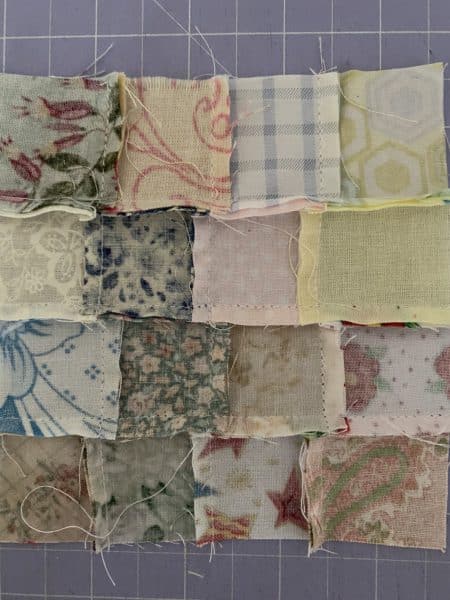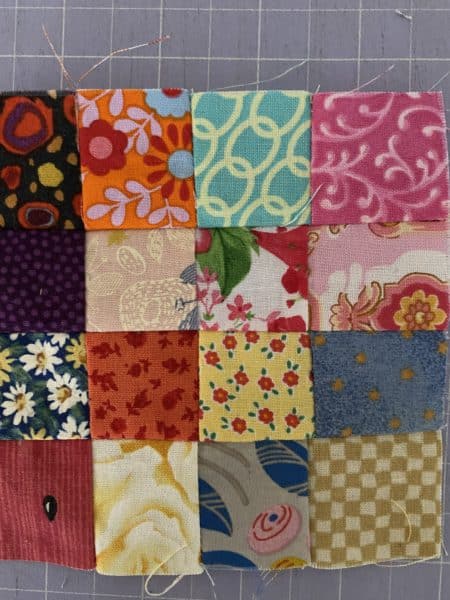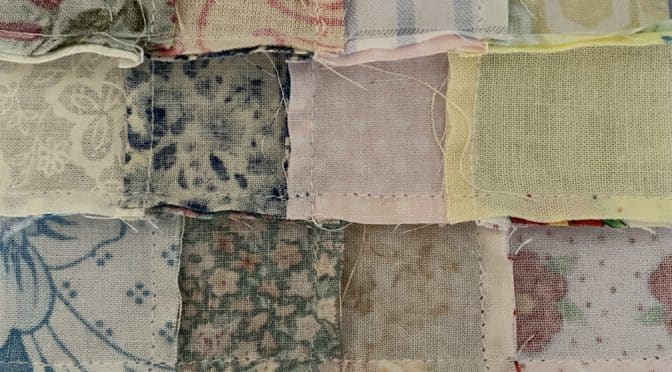Nesting Quilt Block Seams
Hello Dear Friends and Readers, today I would like to discuss Nesting Seams for Quilt Blocks. I would have to say at the outset that it seems to be assumed knowledge for quilters, but its not necessarily that easy to explain.
This has come about because I had a lovely question from Linda asking me how I nest my seams? I got to thinking about this. So I decided to go down this rabbit hole with some further thoughts. It’s actually a very good question. Well in the first instance I wasn’t sure whether she meant for a block, or in general, and when you think about it, quilt blocks can be so variable, each quilt block could deserve their own detailed explanation of how to lay out the seams depending on which block you are making. Well then, when it comes to putting a quilt together, thats another situation again, depending on the type and intricacies of the blocks. Sometimes, it just isn’t possible to “nest a seam”, and they unfortunately have to lay on top of each other. That is where sashing can be useful because they create a clean line to put a block against…..or maybe not. If a sashing is also detailed, it may present it own problems.
I have no idea where the term “Nesting” a seam came from. There are so many other terms for nesting and none of them really relate to sewing. In my mind, I think the idea may have come from the fact, that the back of a seam and where they join can sometimes look like a bit of a nest! We all know the term nesting to make a home ready for babies, or as a place of comfort and happiness for families and individuals. It is often related to preparation, neatness and readiness for other things to happen.
When it comes to seams, there are many other descriptors used for dressmaking and tailoring which are, in my mind, quite different to quilting. The seam allowances and styles and methods of seams are quite varied.
These days there are some quilters who like to press their seams open. I’m not saying it’s right or wrong, but its not my preference. One of the things which can occur is migration of quilt batting. I think this can be prevented by nesting seams which are turned to one side rather than opened. I have written an article about this here.
Quilting Seams Pressed Open or Closed Debate
It is important to remember that dressmaking is quite a contrast to patchwork. Usually in dressmaking one is working with one fabric. There are some joins and the seams are generally wider and finished. However with patchwork, there are some or many fabrics used to make a patchwork design on the outside. There are many unfinished seams and the pieces can be quite small. The seams will add a lot of weight and bulk to the finished piece too.
Still, what does it mean to nest a seam? To me, nesting a seam, is a seam which is turned to one side after two pieces of fabric are joined together. This seam may meet another seam, like at a crossroad. In order for that seam to meet the other seam and for the corners to meet at (for the sake of the argument at 90 degrees) then the opposing seam is better to fold to the opposite direction. In doing this the two folded seams which are meeting, need to abut or align as closely as possible together, and folded to opposing directions in order for the outside pattern of the quilt block to keep its pattern sharp and the fabrics to lay as flat as is possible.
How is the seam nested or aligned? I find it is useful to put the two pieces together, and then feel between fingers and thumb to check that the seams and lined up as close together as possible, with the seams in opposing directions. Depending on the length of the seam, it can be helpful to pin in place to prevent movement whilst sewing together. Be careful that the seam is not distorted by the pin or the stitching as sometimes the feed dogs do not keep up the underside with the top.
My favourite method is to sew the pieces together with a framework or scaffold of thread achieved by chain piecing which holds the pieces of fabric together. I have outlined this method in this post.
36 Patch Postage Stamp Blocks Tutorial
Here I can show you the result of this method. To keep it real, I am showing you some blocks which have not yet been pressed. I do not press them until they are all sewn together. Bear in mind that these are made with 1 1/2” pieces and they are all scraps and the fabrics are all slightly different even though they are all quilting cottons. See how the direction of the seams alternate right, left, right, left.

Because I have use the scaffolding method to sew it together, the block is pretty flat considering how many seams there are.
Here is another block from the right side and you can see that the points are pretty sharp to within a thread or two width.

I hope this can shed a little bit of light on Nesting Seams for Quilt Blocks. Remember that sometimes you just have to do the best you can. It is not always possible to nest a seam. Sometimes I have unpicked the seam to make it lay in the opposite direction as this will improve the lay of the quilt top for quilting and prevent distortion of the block.
One other point, folding and pressing the seam to the darker fabric is often recommended. It this is especially useful when sewing with very light coloured fabrics, where the seam allowance can sometimes show through. So in this instance you many ot may not be able to nest the seams. Each quilt is different and you will need to asses it as you go.
If you enjoyed this post and you are keen for some other tips for quilting and patchwork you may also enjoy these posts.
Obsession with Pre Cuts / Make Your Own
Signature Pre-Cuts from Your Stash
Free Motion Quilting Part 3 The Sandwich
Happy stitching,
Susie

